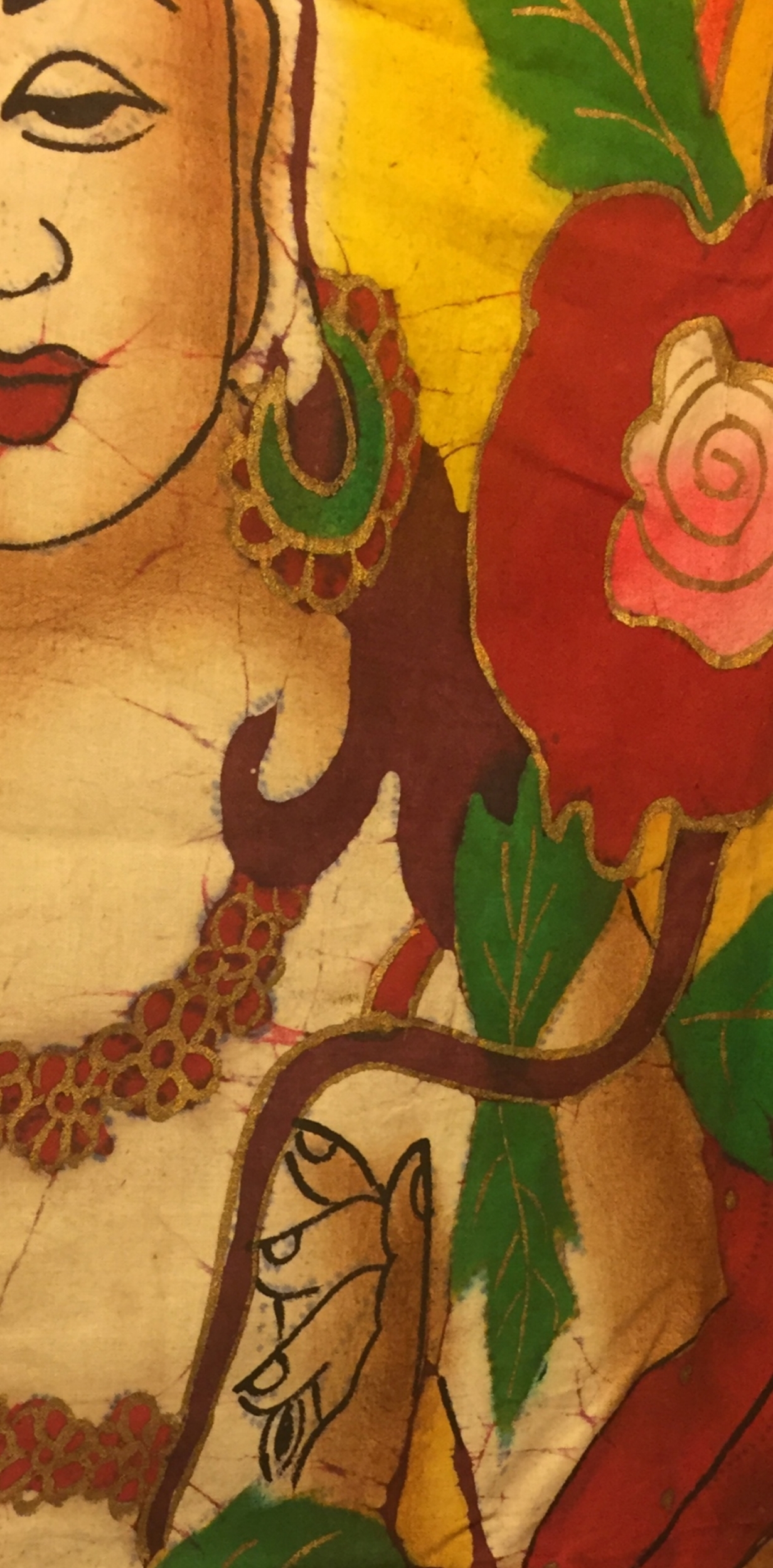Known in Japanese and Chinese markets as gobo, burdock is also referred to as love leaves, kappa, clotbur, beggar or batchelor buttons, and niubangzi in TCM. She is identified by her very large course heart shaped leaves that are wooly underneath with reddish hollow stalks. Providing essential pollen and nectar for honeybees, she also restores vital minerals to topsoil and is a welcome addition to any biodynamic compost. A cool pleasant alkalizing tea, she is nutritive and rich in iron, magnesium, manganese, silicon, and thiamin.
Her flowers are thistle like with each bristle ending in a tiny hook shape. Burdock's clinging properties led to the invention of the hook and loop fastener commonly known as velcro. A Swiss inventor became curious about the seeds of the burdock plant that had attached themselves to his clothes and that of his dog's fur. The rest is history.
Sharing the same family as artichoke, her stalks can be peeled and eaten raw or boiled in salt water for a very similar taste. She has become a premium vegetable in the fermentation community for her added benefits in kimchi and miso soup. Used as a bitter agent in beer before the introduction of hops, and still used today as a soft drink in Europe, her Old World medieval origins are a great appeal the world round.
A nourishing nutritive tonic providing emotional stability to the most buried and far reaching aspects of ourselves - allowing for the greatest transformation. Cooling and calm to hot conditions and fiery constitutions such as nervous energy, struggle, anger, frustration, jelousy, even rage is curtailed with her grace. Taken internally and externally for those with inflamed reddened heated skin conditions, burdock works best for chronic non-acute eruptions such as eczema, psoriases, acne, impetigo, fever blisters, boils, rashes, poison ivy/oak and hives.
Whenever you are working to purify the liver, skin eruptions are inevitable and burdock aids both organs during this transitioning process. By nourishing and strengthening the kidneys, liver, and immune system, burdock purifies the blood and body, and nourishes as you transform and heal. Burdock root energizes the peristaltic muscles and the mucous surfaces of the intestines. By breaking apart bile congestion, burdock promotes better digestion and absorption throughout the digestive process, and relieves a chronic upset stomach.
Burdock root neutralizes and eliminates poisons and toxins from the body by increasing urine flow and can even treat mild kidney related toxemia. With this movement of fluid energy and expulsion of uric acid from the body the blood is purified and the kidneys are strengthened and encouraged to heal. Thus, the discomfort from UTIs is reduced, the bladder is soothed, and urethral burning minimized.
An infusion of burdock seeds make for smoother skin and lustrous hair. Current studies indicate that burdock root oil extract is rich in essential fatty acids including rare long-chain EFAs. Bur scalp oil is widely used in Europe as a strengthening nourishing tonic to the hair follicles, reduces hair loss, keeps dandruff in check and eases an itchy scalp.
Burdock root syrup and tea are soothing to mucous membranes and healing to chronic colds, dry or smoker's cough, emphysema and wheezing. Dried powderer root is also an astringent in healing open wounds. Bath soaks with burdock root alleviates inflamed joints and extremities, swelling from sprains, bursitis, arthritis, rheumatism, sciatica, backaches and varicose veins.
Another strong ally in the wise woman way, burdock has long been used by native tribal women of the Cherokee and Meskwaki nation to strengthen the womb before and after birth giving much needed stamina and strength. Utilized in the last trimester of pregnancy, she aids in preeclampsia and reduces ankle swelling through her diuretic action. Root tincture and tea is an old English folk remedy for acute prolapsed uterus. She also helps to control yeast overgrowth/candida and is a galactagogue that increases lactation.
Burdock root is contraindicated in the first trimester and for those with a history of miscarriage as it may promote menstruation. The green, above-ground portions may cause contact dermatitis in folks with allergies that may be remedied with immediate soap and water.
Gladstar, Rosemary. Herbal Recipes for Vibrant Health. Story Publishing. MA. 2001.
Moore, Micheal. Medicinal Plants of the Mountain West. Museum of New Mexico Press. Santa Fe. 2003. Print.
Weed, Susan. Healing Wise. Woodstock: Ash Tree Publishing, 1989. Print.

